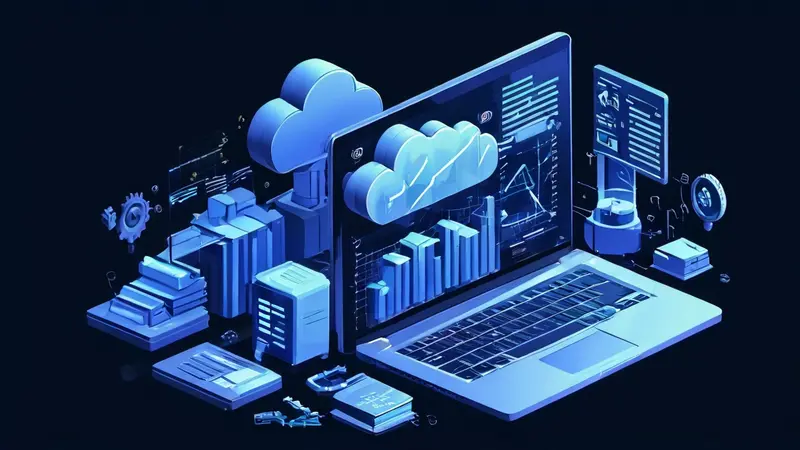The editor of Downcodes will give you an in-depth understanding of all aspects of server hardware development! From basic concepts to development steps to related FAQs, this article will provide you with a comprehensive and clear explanation. Server hardware development is not a simple assembly. It is a systematic project that involves the selection, configuration, integration and optimization of multiple key components such as processors, memory, storage, and networks. The ultimate goal is to create an efficient, stable, and secure server platform. . Whether you are pursuing high performance or focusing on stability and energy efficiency, everything needs to be considered carefully and follow a series of basic principles.

Server hardware development is a process involving computer hardware design, integration, testing and optimization. The main goal is to create an efficient, stable and secure server platform that can support various network applications and services. This process typically involves selecting and configuring processors, memory, storage systems, network interfaces, and other key components to meet specific performance, reliability, security, and cost-effectiveness needs. In addition, server hardware development may also involve hardware fault diagnosis and repair, firmware and driver development, system-level performance optimization, and thermal and energy management.
Before we explore various aspects of server hardware development in detail, let's first understand the basic concepts and principles of this field.
1. Basic concepts of server hardware
Server hardware is the physical equipment that makes up the server, including processors, memory, hard drives, power supplies, and various other components. The quality and configuration of server hardware directly determines the performance, stability and energy efficiency of the server.
Processor: The processor is the core of the server and is responsible for handling all computing tasks. Server processors usually have multiple cores that can handle multiple tasks at the same time, and are specifically designed to enhance parallel processing and multitasking capabilities.
Memory: Memory is the working space of the server and stores the data and programs being processed. Servers usually require a large amount of memory to support applications with high concurrency and large data volumes.
Storage system: The storage system is the long-term memory of the server and stores all data and programs. A server's storage system typically includes hard disk drives (HDDs) and solid-state drives (SSDs), and possibly tape drives and optical drives.
Network interface: The network interface connects the server and the network and supports the transmission of data. A server's network interfaces typically include Ethernet cards and Fiber Channel adapters, and possibly a wireless network adapter.
2. Basic principles of server hardware development
Server hardware development needs to follow some basic principles to ensure that the developed server can meet the needs and has good performance, stability and energy efficiency.
Performance priority: Servers need to handle large amounts of data and requests, so performance is the primary consideration in server hardware development. Developers need to choose high-performance processors, sufficient memory and fast storage systems, as well as high-speed network interfaces.
Stability and reliability: Servers usually need to run 24 hours a day, so stability and reliability are very important. Developers need to choose good quality, long-lasting hardware, and systems designed with redundancy.
Energy efficiency: Servers typically require large amounts of power, so energy efficiency is an important consideration. Developers need to choose energy-efficient hardware and have good thermal management and energy management systems.
Cost-Effectiveness: While performance, stability, and energy efficiency are all important, cost is also an important consideration. Developers need to reduce costs as much as possible while meeting demand.
3. Steps of server hardware development
Server hardware development usually includes the following steps:
Requirements analysis: Clarify the purpose and requirements of the server, including performance, stability, energy efficiency, cost, etc.
Design: Select and configure appropriate hardware, including processors, memory, storage systems, network interfaces, etc.
Integration: Assembling all hardware into a complete server.
Testing: Test the performance, stability and energy efficiency of the server, as well as compatibility and security.
Optimization: Based on test results, optimize hardware configuration and system settings to improve performance, stability, and energy efficiency.
Maintenance: Regularly inspect and maintain the server, including cleaning and replacement of hardware, as well as software updates and optimization.
Overall, server hardware development is a complex and important task that requires professional knowledge and experience. I hope this article can help you have a deeper understanding and knowledge of it.
1. What is server hardware development? Server hardware development refers to the process of designing and developing hardware components and parts for use in server systems. These hardware components include processors, memory, storage devices, network interface cards, etc., which together form the main hardware foundation of the server.
2. What is the importance of server hardware development? The importance of server hardware development lies in providing high-performance, high-reliability server systems to meet the growing data processing needs. By optimizing hardware design and development, the performance, scalability and energy efficiency of the server can be improved, thereby improving the operating efficiency and stability of the server.
3. What are the steps for server hardware development? Server hardware development usually includes the following steps:
Demand analysis: Understand user needs and requirements, and determine server functions and performance indicators. Architecture design: Design the hardware architecture of the server, including selecting appropriate processors, memory, storage devices, etc. Prototyping: Prototype the server and test and validate it to ensure it meets design requirements. Mass production: Optimize based on prototype test results and carry out large-scale mass production. Verification and testing: Verification and testing of production servers to ensure that their performance and reliability meet standard requirements. Launch and maintenance: Bring the server to the market and provide maintenance and support services to ensure the normal operation of the server.Note: Try not to use words such as first, second, then, finally, and finally in the above FAQs.
I hope this explanation by the editor of Downcodes can help you better understand server hardware development. If you have any other questions, please leave a message in the comment area!